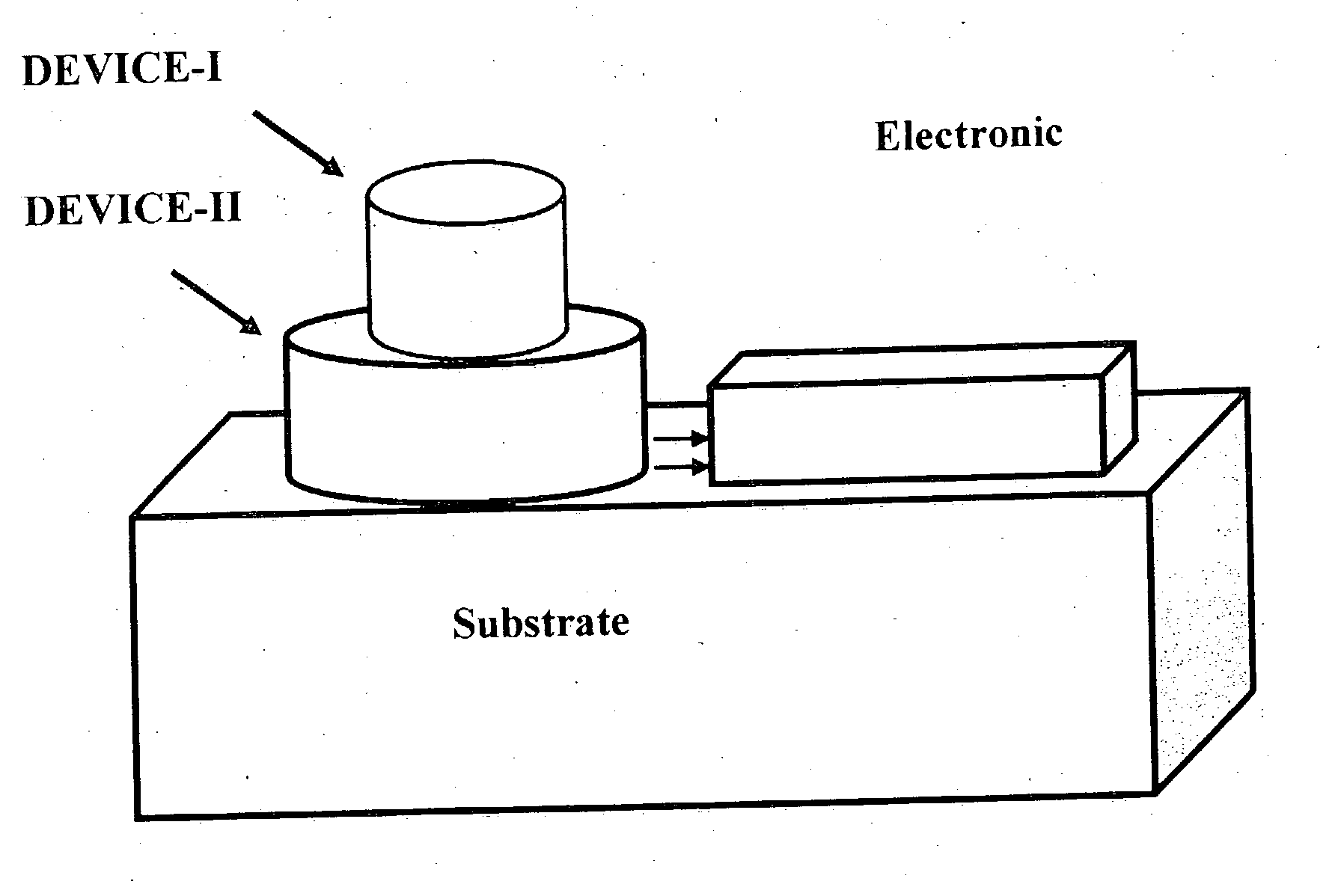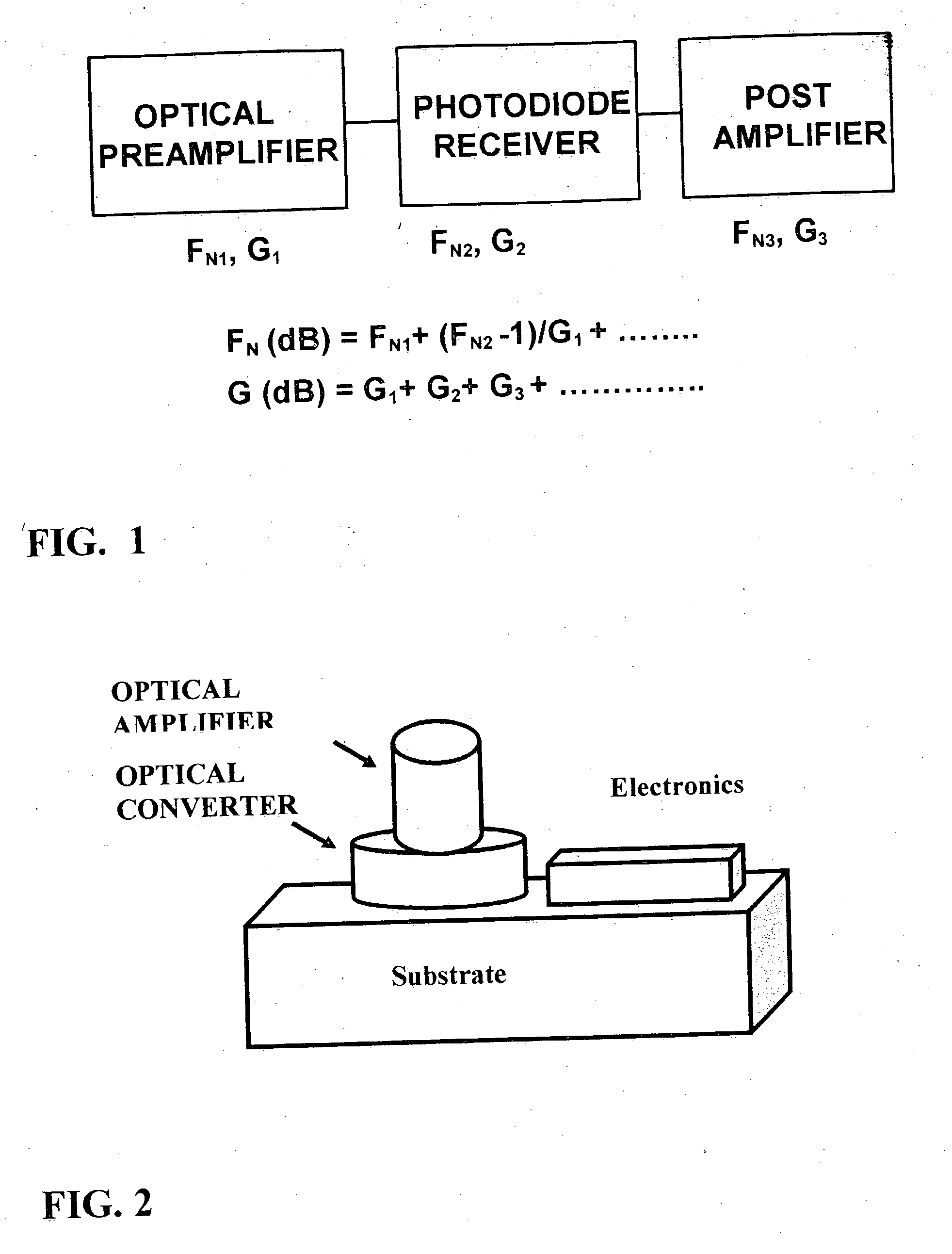Monolithic photoreceiver technology for free space optical networks
a free space optical network and photoreceiver technology, applied in the direction of nanoinformatics, semiconductor lasers, radiocontrolled devices, etc., can solve the problems of ineffective cost reduction, inability to increase the link budget, and inability to achieve the effect of optimizing the design and performance of monolithic photoreceivers
- Summary
- Abstract
- Description
- Claims
- Application Information
AI Technical Summary
Benefits of technology
Problems solved by technology
Method used
Image
Examples
Embodiment Construction
In the following sections, we present the concept and design of the photoreceiver, showing performance variations with design parameters. We also present performance achieved thus far and the expected performance when the monolithic photoreceiver is optimized.
(1) Photoreceiver Concept:
The concept of pre-amplified photoreceivers is well established, having been applied to produce the most sensitive optical receivers to date. Its effectiveness is based on the fact that when amplifiers are cascaded as shown in FIG. 1, the gain is additive, while the noise figure depends directly on the noise figure and inversely as the gain of the 1st stage. This provides maximum flexibility in designing ultra low noise photoreceivers since the front end (1st stage) can be optimized for minimum noise performance which also translates into-moderate gain. Subsequent stages can then be optimized for high gain to achieve the required sensitivity requirements. With this approach, near quantum limit sen...
PUM
 Login to View More
Login to View More Abstract
Description
Claims
Application Information
 Login to View More
Login to View More - R&D
- Intellectual Property
- Life Sciences
- Materials
- Tech Scout
- Unparalleled Data Quality
- Higher Quality Content
- 60% Fewer Hallucinations
Browse by: Latest US Patents, China's latest patents, Technical Efficacy Thesaurus, Application Domain, Technology Topic, Popular Technical Reports.
© 2025 PatSnap. All rights reserved.Legal|Privacy policy|Modern Slavery Act Transparency Statement|Sitemap|About US| Contact US: help@patsnap.com



